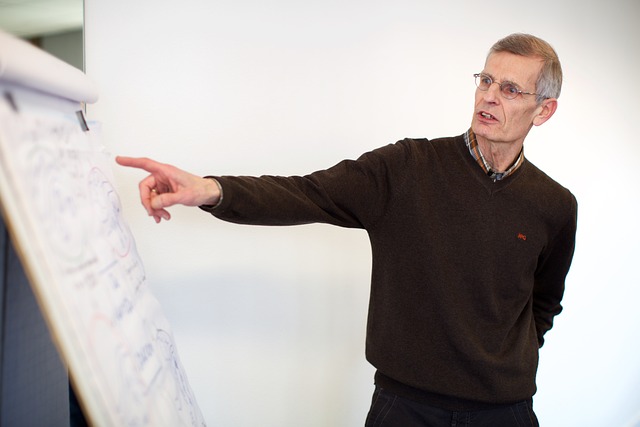Understanding the Culture of Innovation
Creating a culture of innovation starts with understanding what innovation truly means within your organization. It’s not just about coming up with a bright idea that dazzles everyone; it’s about fostering an environment where new ideas are encouraged and developed. Embracing a culture of innovation requires every individual in the organization to feel empowered to share ideas, no matter how unconventional they might be. This concept emphasizes the importance of collaboration and open communication among team members. When people feel safe to express their thoughts and suggestions, sparks of creativity ignite, leading to breakthroughs that can significantly benefit the organization.
Encouraging a culture of innovation often means breaking down silos that exist within an organization. Departments can become so insulated that creativity and insights become constrained. To foster a genuine culture of innovation, it is vital to promote cross-departmental collaboration. This approach allows different perspectives to converge, generating unique solutions to complex problems. Organizations should create platforms for brainstorming and idea-sharing sessions, where employees from different backgrounds come together to exchange their thoughts. Organizing regular workshops, hackathons, or innovation days can also invigorate this cultural aspect. Through such initiatives, employees can pursue their passions while innovating and finding agile solutions that can take the organization to the next level.
The Role of Leadership in Fostering Innovation
Leaders play a pivotal role in establishing a culture of innovation and agility. Leadership sets the tone for how innovation is viewed within the organization. If leaders exhibit a closed mindset regarding change or reject new ideas outright, employees may hesitate to voice their thoughts. Conversely, when leaders embrace innovation by actively participating in brainstorming sessions, sharing their experiences with failure, and celebrating successful innovations, they inspire their teams to think creatively. This approach also involves offering resources for experimentation, such as funding for new projects or providing time during the workweek for employees to explore their innovative ideas.
Moreover, leaders must communicate a clear vision that aligns with the culture of innovation. When employees understand the organization’s goals and values, they feel compelled to contribute their creative skills and inventiveness. Clear communication ensures that all employees are moving in the same direction while understanding how their contributions fit into the larger picture. Leaders can also establish innovation champions or teams that focus specifically on exploring new ideas, fostering agile methodologies, and providing mentorship to colleagues who want to enhance their innovative skills. Such efforts not only boost morale but reinforce a culture that values agility and creativity.
Agility as a Cornerstone of Innovative Culture
Agility is a vital component in creating and maintaining a culture of innovation. In today’s fast-paced world, organizations must adapt quickly to changing circumstances. This adaptability requires an unwavering commitment to innovation. When teams operate with agility, they can swiftly pivot their strategies, iterate on their ideas, and implement changes based on feedback from customers and stakeholders. One extremely effective methodology for enhancing agility is through the adoption of agile project management techniques such as Scrum or Kanban. These frameworks encourage teams to work collaboratively and break projects into manageable tasks, enabling faster delivery and continuous improvement.
Implementing iterative processes allows teams to test their ideas in shorter cycles, rather than investing large amounts of time up front into a project that may not yield positive results. This approach minimizes the risk associated with innovation and encourages further experimentation. Additionally, by incorporating regular feedback loops within the organization, teams can maintain a pulse on what works and what doesn’t. Continuous learning becomes a staple of the team’s culture, allowing members to grow and adapt collectively while fostering an environment where everyone plays a crucial role in driving innovation forward.
Empowering Employees as Innovators
Empowering employees to become innovators truly transforms an organization’s landscape. When employees feel confident to voice their ideas and contribute to the innovation process, they take ownership of their work and become more invested in the organization’s success. To empower employees, organizations can provide professional development opportunities that focus on building skills necessary for innovation, such as critical thinking, problem-solving, and creative ideation. Training programs that encourage divergent thinking and innovation methodologies greatly benefit employees. Investing in their growth indicates a commitment to fostering a culture of innovation, consequently fostering loyalty and satisfaction.
Another aspect of empowerment involves recognizing and rewarding innovative efforts. Developing a rewards system that celebrates not only successful innovations but also the creativity put into the process can motivate others to follow suit. Given that failure is often part of the innovative journey, helping employees see the value in learning from their mistakes without fear of reprimands encourages a fail-fast mindset. In this kind of environment, employees can contribute their unique insights, transforming the organization into a hotbed of new ideas and agile responses to market changes and consumer demands.
Measuring Innovation and Agility
Once a culture of innovation and agility is in place, it becomes crucial to establish metrics to measure its effectiveness. Organizations should identify key performance indicators (KPIs) that correlate directly with innovation efforts. Common KPIs might include the number of new ideas generated, time to market for new products, customer satisfaction ratings, and employee engagement levels concerning innovation initiatives. Collecting data on these metrics can help gauge where the organization stands, what works, and what needs reassessment.
Regular assessments coupled with feedback mechanisms can enable leaders to refine their approach continuously. Surveys and suggestion boxes can help gather employee insights and foster a sense of ownership over innovation initiatives. Moreover, reviewing customer feedback will offer invaluable information about how innovative practices resonate within the market. Improving the innovation process should be iterative, allowing organizations to adapt and grow as circumstances change. This ongoing evaluation helps sustain a culture of innovation long-term, ensuring that the focal point remains on continuous improvement and responsiveness.
Creating a Safe Space for Ideas
Establishing a safe space for ideas is critical when creating a culture of innovation and agility. Employees want to know that their input genuinely matters and that their contributions will not lead to negative repercussions. To create this environment, organizations must foster psychological safety, where team members feel free to express their thoughts without fear of losing their jobs or facing ridicule. Implementing practices such as regular brainstorming sessions, open forums, and collaborative tools allows everyone to participate in the ideation process. Importantly, leadership should model vulnerability by sharing their own ideas and reactions, demonstrating openness to feedback and suggestions.
Encouraging creative expression through various formats, such as visual brainstorming methods or digital platforms, can also promote a more inclusive environment. These practices may help diminish the fearfulness associated with idea-sharing, particularly among those who may be quieter or less confident. Furthermore, organizations should consistently remind employees that innovation involves taking risks and that not every idea will be a hit. By normalizing failure as part of the innovation process, companies can cultivate a resilient workforce eager to experiment and innovate—traits that ultimately sustain agility within the organization.
Conclusion: Embracing the Journey of Innovation
Creating a culture of innovation and agility is an ongoing journey rather than a fixed destination. Organizations must consistently evaluate and refine their processes to ensure they’re nurturing an innovative environment that encourages teamwork and problem-solving. A focus on collaboration, agility, empowerment, measurement, and positive reinforcement establishes a robust culture that keeps innovation alive at its core. Remember, it’s not about being the best; it’s about being better than yesterday. By embracing this journey, organizations not only set themselves up for success; they also enhance their capability to adapt to changes and thrive in a competitive marketplace.
FAQs
What is a culture of innovation?
A culture of innovation is an environment where creativity is encouraged, and employees feel empowered to contribute new ideas. It emphasizes collaboration, open communication, and continuous learning.
How can we increase agility in our organization?
You can increase agility by adopting agile methodologies such as Scrum or Kanban, promoting cross-departmental collaboration, and creating iterative processes that allow for frequent feedback and adjustments.
What role do leaders play in fostering innovation?
Leaders establish the tone for innovation culture. Their actions, such as participation in brainstorming and open communication, inspire employees to contribute ideas confidently.
Why is psychological safety important for innovation?
Psychological safety allows employees to voice their ideas and take risks without fear of negative consequences. It encourages a culture of experimentation, which is vital for fostering innovation.
How can we measure the success of our innovation initiatives?
You can measure innovation success through key performance indicators (KPIs) like the number of new ideas generated, time to market, customer satisfaction, and employee engagement levels related to innovation activities.



